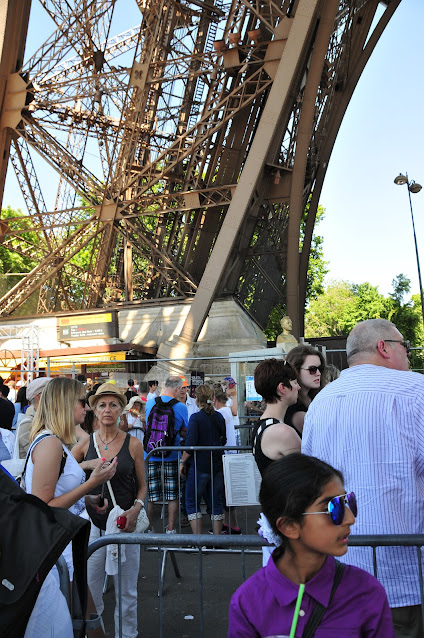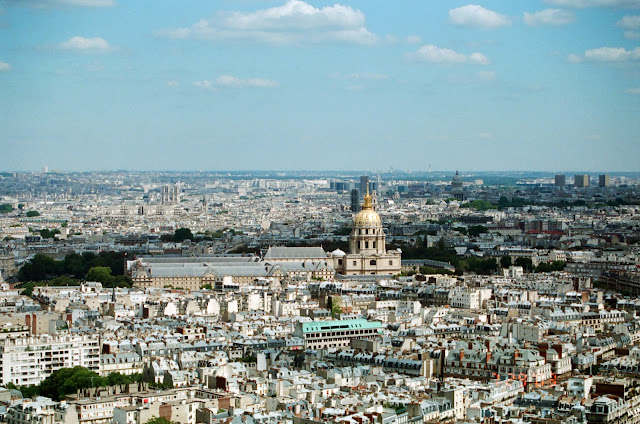The Great Pyramid of Giza, a marvel of ancient engineering, generally believed to be constructed between 2589 to 2504 BC, has stood the test of time. It was the tallest man-made structure for millennia.
While it's often believed Eiffel Tower(1) to be the tallest man-made structure after the pyramids, this isn't entirely accurate. Several European churches and cathedrals, including Old St. Paul's Cathedral(2) in London, surpassed the Great Pyramid's height before the Eiffel Tower.
It's fascinating to think that centuries ago, builders were reaching for the sky, constructing towering structures that would awe and inspire generations to come.
It's a fascinating question: why would churches and cathedrals, particularly those in small villages, be built on hilltops? Perhaps it was a strategic choice to elevate these sacred spaces, both physically and symbolically. Or perhaps it was a practical necessity, as floodplains were often prone to inundation.
These grand structures were not just places of worship; they were statements of power, prestige, and artistic expression. Their towering heights and intricate designs were meant to inspire awe and devotion. However, even these magnificent buildings had their imperfections, from slightly crooked pews to structural weaknesses.
One can't help but wonder what might have been achieved if the vast sums of money spent on religious buildings had been allocated to education, health, or even simply feeding the poor. Nevertheless, these structures played a crucial role in the development of various fields, from architecture and engineering to art and music.
The Eiffel Tower and the Washington Monument represent(3) a shift away from religious symbolism. These secular structures, designed to celebrate human achievement and national pride, demonstrate how the concept of grand architecture can be applied to non-religious purposes.
I saw the Eiffel Tower for the very first time in 1977. Back then, Iranians did not need visas to travel to many countries. Unlike today, they were welcome anywhere in the world. (I have to be honest, being an American and Canadian, I am still afraid of entering US customs because of my relinquished background.)
My pictures from that time were taken with my very first camera, an Agfa 126(4). It turns out that nature will take care of itself. Negatives and slides degrade if they are not kept away from air. So, here it is, my first picture of the Eiffel Tower.
It's a shame those fingerprints marred the surface. Back then, travel wasn't as common, and iconic landmarks like the Eiffel Tower were much less crowded. No long queues for tickets or hours-long waits to ascend. It was a different era, a simpler time.
Times have certainly changed. The Eiffel Tower, once a serene escape, is now a bustling hub of tourism. It's a testament to progress and prosperity. While we've traded the hunt for the supermarket, our appetite for experiences and possessions seems insatiable.
It's a fascinating tale of ambition and innovation. While Gustave Eiffel is often credited as the mastermind behind the iconic tower, it was actually engineers Maurice Koechlin(5) and Émile Nouguier(6) who conceived the original design. Eiffel, a shrewd businessman, recognized the potential of the project and acquired the rights.
This incident is a stark reminder of how often brilliant ideas are overshadowed by those who know how to seize opportunities. It's a cautionary tale for creators everywhere.
Despite the controversy surrounding its origins, the Eiffel Tower remains a breathtaking masterpiece of engineering and art. Its seemingly simple design, composed of repetitive elements, is a testament to the power of elegant simplicity.
The magic of the Eiffel Tower truly shines when stripped of its colorful façade. In black and white, its intricate structure and bold lines become even more striking.
Back in the days of film photography, I had the luxury of choosing between black and white or color. While digital photography has revolutionized the way we capture images, there's something undeniably timeless about film photography. It's a reminder of a bygone era, when each shot was precious.

(c) I personally took these photos and own the
rights to them. Please feel free to use them as you wish.
(1) https://en.wikipedia.org/wiki/Eiffel_Tower
(2) https://en.wikipedia.org/wiki/Old_St_Paul%27s_Cathedral
(3) https://en.wikipedia.org/wiki/Washington_Monument
(4) http://camera-wiki.org/wiki/Agfa_Agfamatic_126




























Comments
Post a Comment